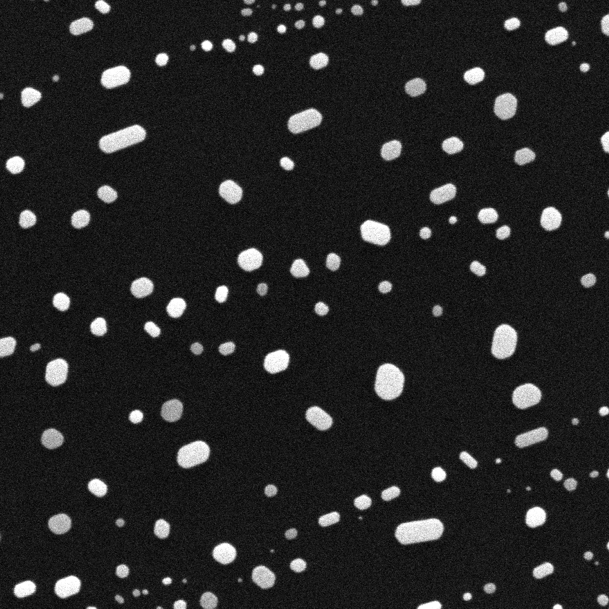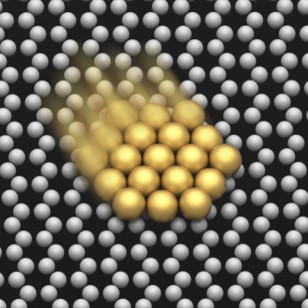Towards Motion with Vanishing Energy Dissipation
Friction is a ubiquitous phenomenon encountered during everyday activities as common as walking, and also holds primary importance in mechanical processes as the main mechanism responsible for energy dissipation. Within this context, developments in our understanding of friction and its controlled mitigation at relevant interfaces and time as well as length scales are expected to yield significant returns in the form of energy savings.
| Our efforts have recently resulted in the demonstration that structural superlubricity can indeed be realized under ambient conditions in a material system involving gold islands on a graphite substrate [1]. Further work has shown that this behavior is not limited to gold, and can be extended to other noble metals such as platinum [2]. Shown here on the left, is an SEM image of a graphite surface decorated with gold islands of various size after post-deposition annealing at 650°C. Scale bar, 500 nm. |  |
 |
Our current activities focus on extending structural superlubricity to larger interfaces relevant for conventional engineering applications by the use of novel materials, including but not limited to bulk metallic glasses (BMGs). Our ultimate goal is to realize motion with vanishing energy dissipation in a wide variety of applications at different length scales, which would enable tremendous opportunities in fields ranging from energy harvesting to space travel.
[1]: E. Cihan, S. Ipek, E. Durgun, M.Z. Baykara, Structural Lubricity under Ambient Conditions, Nature Communications 7, 12055 (2016).
[2]: A. Ozogul, S. Ipek, E. Durgun, M.Z. Baykara, Structural Superlubricity of Platinum under Ambient Conditions: The Effects of Chemistry and Geometry, Applied Physics Letters 111, 211602 (2017).

